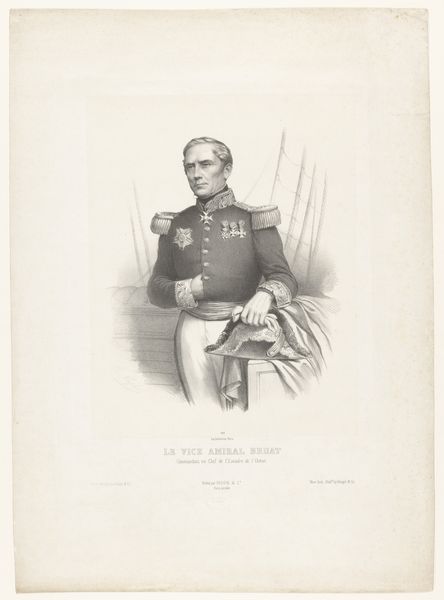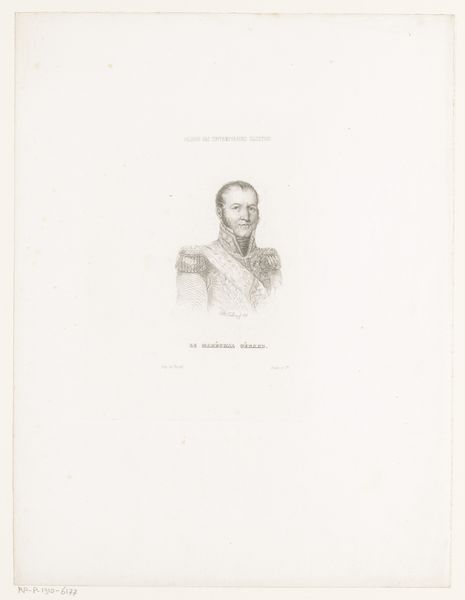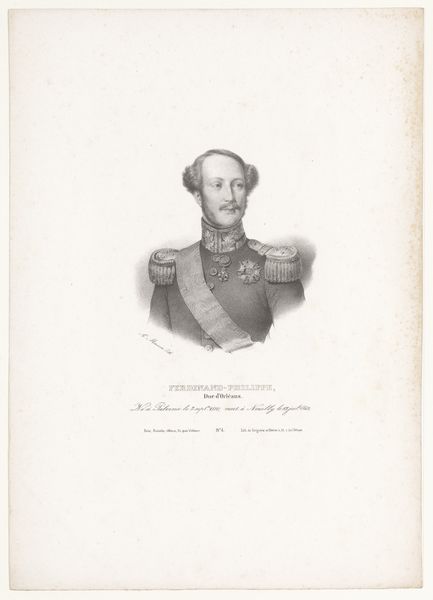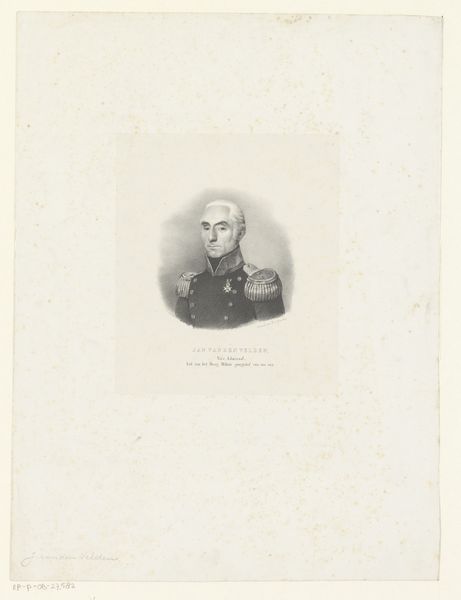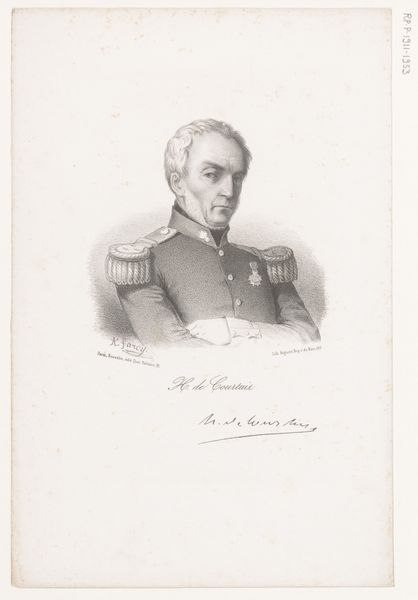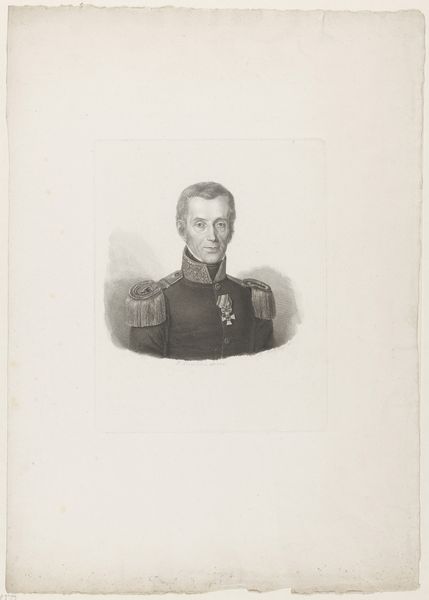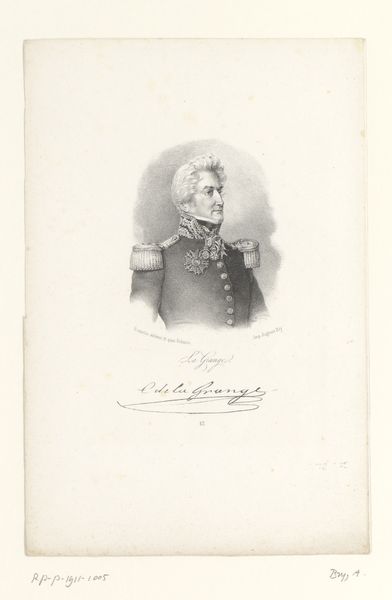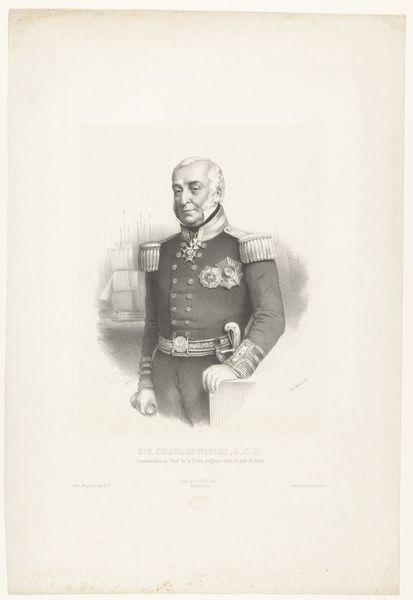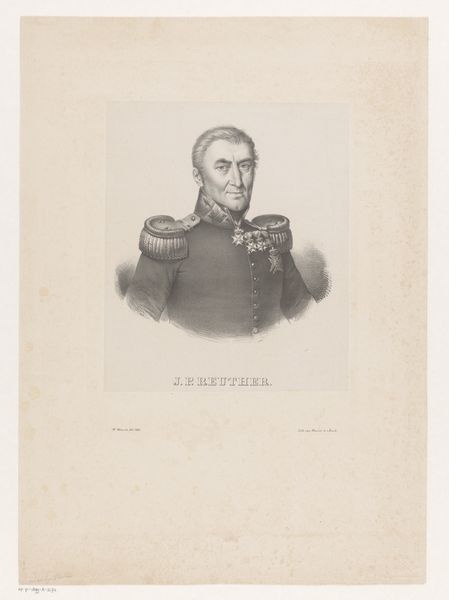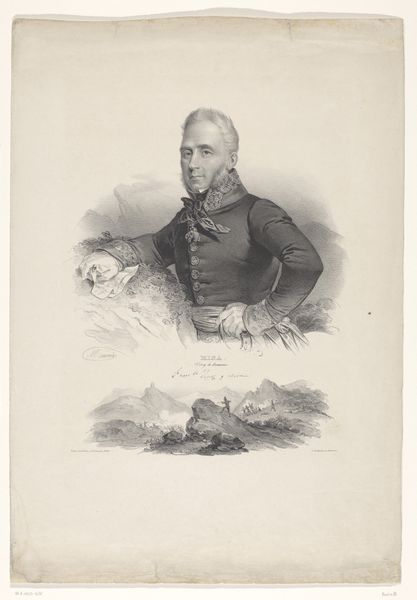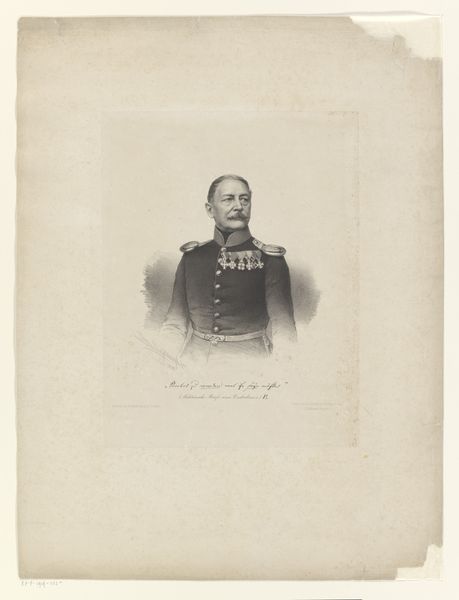
print, engraving
#
portrait
# print
#
pencil drawing
#
history-painting
#
engraving
#
realism
Dimensions: height 360 mm, width 275 mm
Copyright: Rijks Museum: Open Domain
Editor: This is "Portret van Bertrand Clauzel" by Antoine Maurin, made between 1831 and 1853. It's currently housed in the Rijksmuseum, and is a print, probably engraving, judging by the look of it. I find it quite austere. What jumps out at you when you look at this work? Curator: What I immediately see are the methods of production. Look at the printmaking: how was this engraving made? Consider the labor involved in creating those fine lines. Also, what social and economic structures enabled this object's existence? Think about the paper—its manufacture, trade, and availability. Editor: That’s an interesting perspective. I tend to focus on the image itself, on Clauzel’s stern expression. How does thinking about the paper affect my understanding of the portrait? Curator: Well, the availability and cost of paper determined who could afford such portraits, thereby constructing power. It shifts our gaze to considering printmaking as a technology, inseparable from its social and political implications. This connects it directly to issues of access and representation. Who could afford a portrait? Who was left out? Editor: So, it's not just about the general himself, but also about the broader economic system at play in creating his image? Curator: Exactly! The portrait exists because of specific material conditions. By analyzing these, we move beyond individual genius to examine networks of production and consumption. It compels us to consider portraiture beyond purely artistic expression and to understand it as a commodity of cultural and historical significance. Editor: I hadn't considered all of those angles. Now I see how material analysis changes my reading of the image. Curator: Absolutely! Examining those elements enriches our interpretation and adds depth to what might seem, at first glance, like a traditional historical portrait.
Comments
No comments
Be the first to comment and join the conversation on the ultimate creative platform.
